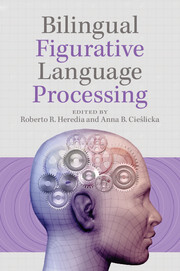Foreword
Published online by Cambridge University Press: 05 February 2015
Summary
Writing a foreword to a book on two of the most complex topics of the research on language processing – figurative language and bilingualism – is quite an endeavor, especially when the volume provides an up-to-date, comprehensive theoretical and experimental treatment of the topic. It is not by accident that in a foreword to a book on idiomatic expressions of some decades ago (Cacciari & Tabossi, 1993) Phil Johnson-Laird used the comprehension of idiomatic expressions in another language as an example of the complexity and elusiveness of nonliteral language: “We have the ability to speak in riddles. These riddles are neither constructed nor interpreted in the normal way. Yet we use them so readily that we are usually unaware of their special character ‒ unless we have the misfortune not to be a native speaker. We call these special riddles idioms” (Johnson-Laird, 1993).
According to the philosopher John Searle (1979), American English native speakers adopt the following adagio in everyday conversations, Speak idiomatically unless there is some special reason not to. That this indeed is the case is confirmed by simple frequency counts estimating that figurative expressions, notably idioms, are as frequent as words (Jackendoff, 1995) and by the common observation that the presence of an idiom often remains unnoticed by native speakers. Searle’s claim parallels what Sinclair (1991) called the Idiom Principle (see Kecskes, this volume), according to which subjects use formulaic language as much as possible to increase communicative efficiency, at the same time reducing the cognitive load on receivers (see, for example, Siyanova-Chanturia & Martinez, 2014).
Information
- Type
- Chapter
- Information
- Bilingual Figurative Language Processing , pp. xiii - xviiiPublisher: Cambridge University PressPrint publication year: 2015
